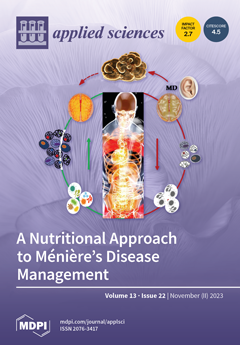The phytochemical characterization of
Castanea spp. fruits is very important for the development of effective strategies for the biodiversity conservation and traceability of chestnuts, as the chestnut is one of the most important Italian and European nut and forest species. In this study,
[...] Read more.
The phytochemical characterization of
Castanea spp. fruits is very important for the development of effective strategies for the biodiversity conservation and traceability of chestnuts, as the chestnut is one of the most important Italian and European nut and forest species. In this study, several cultivars of
C. sativa (sweet chestnuts and “marrone-type”),
C. crenata, and hybrids of
C. sativa ×
C. crenata were characterized by spectrophotometric (Folin–Ciocalteu assay for the total polyphenolic content and ferric reducing antioxidant power test for the antioxidant capacity) and chromatographic (high-performance liquid chromatography coupled to a diode array UV-Vis detector) protocols to define their phytochemical composition and nutraceutical properties. The phytochemical results were then used to build a multivariate statistical model (by principal component analysis) and obtain an effective and rapid tool to discriminate unknown cultivars (i.e., no information about their origin) belonging to different species. The multivariate approach showed that the genotype was a significantly discriminating variable (
p < 0.05) for the phytochemical composition. Polyphenols (in particular, phenolic acids and tannins) have been identified as the main bioactive classes with the highest discriminating power among the different genotypes. The total polyphenol content (TPC) and antioxidant capacity (AOC) showed a rich presence of bioactive compounds (74.09 ± 15.10 mg
GAE 100 g
−1 DW and 11.05 ± 1.35 mmol Fe
2+ kg
−1 DW, respectively), underlining the potential health benefits and functional traits of chestnuts. The principal component analysis applied to phytochemical variables has proved to be an excellent and effective tool for genotype differentiation to be used as a preliminary method for identifying the species of
Castanea spp. fruits with an unknown origin. The present study showed that a multivariate approach, based on phytochemical data and preliminary to genetic analysis, may represent a rapid, effective, and low-cost tool for the traceability and quality evaluation of chestnuts from different species and hybrids with no information on their origin.
Full article





